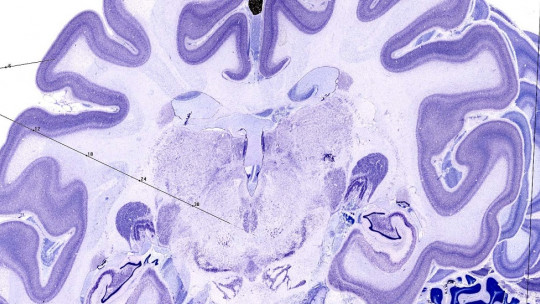
In the personal and physical self-knowledge that all people develop, we know different cognitive, psychological, emotional or physiological components, which largely determine the nature of our human and social experience. Throughout all our experiences, we ignore the mental voice that accompanies our daily actions, and largely determines our performance in them.
This is the case of muscle memory, also known as motor memory. In this article you will find a summary of the keys to how to train muscle memory through a series of routines.
What is muscle memory?
Have you ever thought about what happens in your mind when you write a message to your friends of a completely everyday nature? Or when you sweep the hallway of your house without thinking methodically about everything you are doing? Muscle memory accompanies us throughout many daily and everyday processes throughout our lives.
To develop skills and knowledge about muscle memory training, it is necessary to first unravel the meaning of this concept itself. Muscle or motor memory refers to the body’s ability to remember and repeat specific movements automatically
Muscle memory should not be understood as a matter of physical strength, but rather an intricate interweaving of neural connections that are forged with practice and repetition. From learning to play an instrument to using our cell phone; muscle memory stores it.
This phenomenon is crucial and accompanies us in numerous daily activities, from learning to ride a bicycle to perfecting a musical or sports skill. When we immerse ourselves in a new task, the brain forms connections between the neurons that control movement and the muscles involved. These connections become stronger with repeated practice, leading to muscle memory.
Muscle memory does not reside only in the muscles and body itself, but is an integral process that involves the entire nervous system The brain stores information about the sequence of movements, the force needed, and the coordination of movements required to carry out a specific task. This information is stored in what we could understand as the “muscle memory bank”, ready to be activated when necessary.
An illustrative and concrete example of a phenomenon determined by muscle memory is the act of typing on our computer keyboard After enough practice, your fingers automatically move across the keys, remembering the exact location of each of the letters. This is not the result of conscious thought; That is, while we do it we are not taking into account where the key of each specific character is.
This is definitely a behavior remembered and executed by muscle memory. In summary, muscle memory is an essential component in learning motor skills and efficiently executing specific movements. Understanding how this process works provides the foundation for developing effective training strategies that make the most of this unique way of learning.
Importance of training muscle memory
The importance of becoming aware of muscle memory and beginning to exercise and train it covers different and varied spheres of life, from sports or academic performance to the smallest daily activity. We are going to comment on some of the areas or disciplines in which muscle memory and its training become more relevant:
1. Sport
In the field of sports, the ability to execute movements precisely and automatically makes the difference between average performance and excellence. Elite athletes rely on muscle memory to perform technical gestures quickly and accurately allowing them to excel in their disciplines.
2. Music
Music is another area where muscle memory plays a crucial role. Skilled musicians not only read sheet music, but their skill lies in their hands’ ability to remember complex patterns of notes and chords. This phenomenon not only speeds up performance, but also frees the mind to express itself artistically.
3. Housework
Even in everyday tasks, from driving to doing household activities, muscle memory reduces cognitive load. Allows common movements to be performed efficiently, freeing the mind to address other aspects of the task or simply enjoy the process. This helps us realize that muscle memory itself is a catalyst for overall well-being and improving the quality of our lives.
Factors that affect muscle memory
Like any other component derived from the body and the central nervous system, muscle memory is not uniform in its functioning and intensity, and can be affected by different factors, both personal and physiological and derived from environmental situations. Some of the main interacting factors are:
1. Genetics
Genetics plays a significant role, as Some people may have an innate predisposition to develop more efficient muscle memory However, this does not rule out the ability to improve through training, regardless of genetic predisposition.
2. Aging
Aging also influences muscle memory. As we age, the body’s ability to form new neural connections can decrease, making it more difficult to learn and retain new movements. However, this effect of aging is not an insurmountable impediment, and continued practice remains a valuable tool for maintaining and improving muscle memory throughout life.
3. Health conditions
Health conditions can also have an impact. Injuries, neuromuscular diseases or problems in the nervous system can negatively affect muscle memory. In these cases, it is essential to work closely with health professionals to develop training strategies adapted to the specific needs of each individual
Strategies to train muscle memory
Improving muscle memory involves a conscious and methodical approach. Training muscle memory is a multifaceted process that requires focus, consistency, and variety in the strategies used. Whether through specific exercises, deliberate practice, or mental visualization, each approach contributes to the development of more effective muscle memory. The combination of these strategies, adapted to individual needs, enhances the body’s ability to remember and execute movements with precision and efficiency. We will comment below on the main strategies put into practice:
1. Specific exercises
A key strategy is to develop specific exercises that involve the essential movements related to the desired activity. By identifying these key movements, Adapted practices can be designed that allow the body and brain to become familiar with the necessary movement sequences Gradually increasing the complexity of these exercises challenges and strengthens muscle memory, preparing the body for more precise and coordinated executions.
2. Repetition and deliberate practice
Repetition plays a fundamental role in consolidating muscle memory. Continuous practice of specific movements reinforces the neural connections responsible for automatic execution. However, repetition should not be interpreted as a simple mechanical act Deliberate practice, where conscious attention is paid to every detail of the movement, improves the quality of training and accelerates the learning process.
3. Consistency in training
Consistency in training is essential. Establishing regular routines contributes to the formation of solid motor habits. Even short, frequent sessions can be more effective than long, sporadic workouts. Muscle memory benefits from regular repetition, and consistency ensures steady progress in the development of specific skills.
4. Visualization and mental technique
Visualization and mental technique are powerful tools in muscle memory training. Before executing a movement, visualizing it activates different brain areas associated with muscle memory. The mental technique involves imagining the movement in detail, from the initial position to the complete execution. This practice strengthens neural connections and improves mind-muscle synchronization, contributing to more precise and efficient performance.
5. Feedback and adjustment
Feedback and adjustment are crucial in the training process. Get feedback, whether through an instructor, training partner, or even video recordings, allows identifying areas for improvement. Adjusting practice based on this feedback refines muscle memory and corrects potential errors, facilitating faster, more effective progress.
Conclusions
In conclusion, muscle memory, essential in various activities, is perfected through conscious practice and specific strategies. Identifying key movements, repeating with intention and maintaining consistency in training are essential. Visualization and adjustment based on feedback further refine this process. Understanding and applying these strategies not only improves athletic or artistic performance, but also simplifies daily tasks. Muscle memory, moldable and adaptable, thus becomes a valuable ally in the search for mastery and efficiency.








